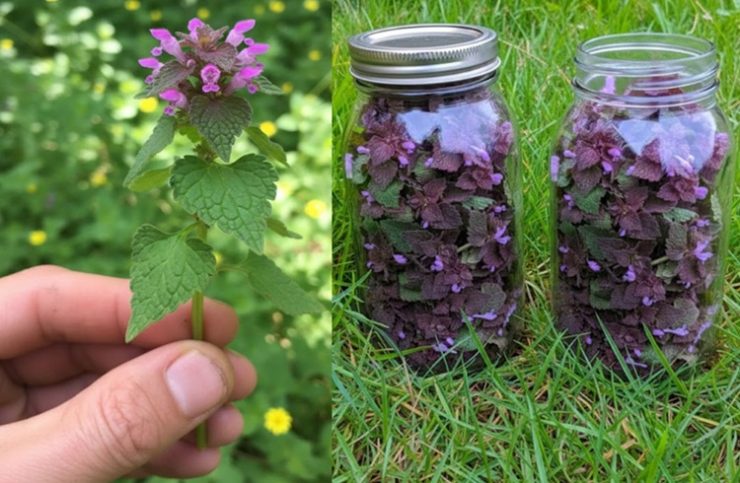Purple dead nettle (Lamium purpureum) is one of those wild plants that many people ignore, stepping over it without realizing how valuable it actually is. Despite its name, purple dead nettle is not a true nettle and does not sting. Instead, it’s part of the mint family and is known for its mild flavor, soft leaves, and surprising properties.
Found in fields, gardens, and even urban areas, purple dead nettle has become a popular plant in natural wellness communities thanks to its rich nutrient profile and versatility.
Here’s everything you should know about this beautiful and underrated herb.
What Is Purple Dead Nettle?
Purple dead nettle is a low-growing plant, recognizable by its:
soft, heart-shaped leaves
purple top leaves
small pink flowers
square stems (typical for mint family plants)
It grows abundantly in early spring and is one of the first wild edible plants to appear after winter.
Key Benefits of Purple Dead Nettle
1.Rich in Nutrients
Purple dead nettle is full of essential nutrients such as:
vitamins A and C
iron
magnesium
antioxidants
fiber
This makes it a great plant to support general wellness and vitality.
2.Natural Anti-inflammatory Support
Traditionally, purple dead nettle has been used to help soothe mild inflammation. Its compounds may support comfort in the joints and muscles when consumed regularly as part of a balanced diet.
3.Supports the Immune System
Thanks to its antioxidant content and natural plant compounds, purple dead nettle may help the body maintain a healthy immune response.
4.Gentle Support for Seasonal Allergies
Some people use purple dead nettle in teas or tinctures during springtime to ease mild seasonal discomforts. Its natural properties may help the body adapt better to pollen-heavy months.
5.Natural Source of Fiber
Eating purple dead nettle raw or in cooked dishes may help support digestion and regularity.
How to Use Purple Dead Nettle
Purple dead nettle is extremely versatile. Here are the most common ways it can be consumed:
1.Tea
Steep the fresh or dried leaves in hot water.
The taste is mild, earthy, and comforting.
2.Smoothies
Blend a handful of young leaves into smoothies for added nutrients.
3.Salads
The fresh tops can be added to salads for a slight herbal taste.
4.Soup or Stir-Fry
Use it like spinach—add it at the end of cooking for extra nutrition.
5.Tinctures & Herbal Oils
Often used in DIY herbal preparations for its traditional properties.
Precautions
Always identify the plant correctly before consuming.
Pregnant or breastfeeding individuals should consult a professional before using new herbs.
Like any plant, it may cause sensitivities in some people.
This article is for educational purposes only and does not replace medical advice.
Purple dead nettle may be a simple wild plant, but it’s far from ordinary. Packed with nutrients, mild in flavor, and surprisingly versatile, it deserves attention from anyone interested in natural wellness, gardening, or herbal preparations.
Whether you enjoy it in tea, salads, or smoothies, this plant can be a valuable addition to your springtime routine.






Add comment